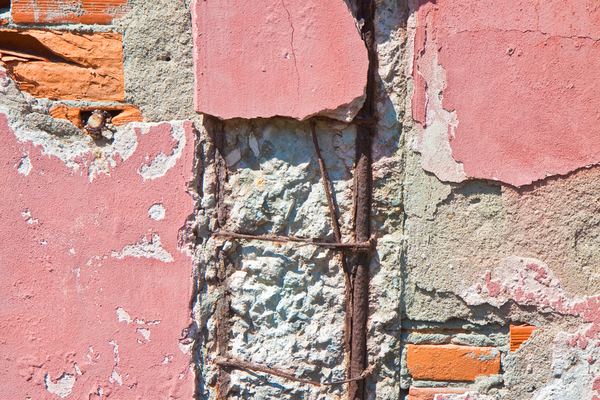
As a leader in end to end waterproofing solutions, including diagnostic, design and remediation – and with exceptional in-house expertise – Danrae Group can recognise and remedy every type of issue.
According to founder and project manager Ron Caruana, one of the most common issues he sees can also be one of the most destructive – concrete cancer.
“I would say we see concrete cancer or concrete spalling in about 50% of cases. Typically, when there is a leaking membrane, there is a significant chance the concrete beneath the membrane will be affected.”
While the impact of concrete cancer is generally very similar – corrosion and loss of structural integrity – there are several causes. Understanding those causes, and having an idea of the treatments, will help you protect your property now and years into the future.
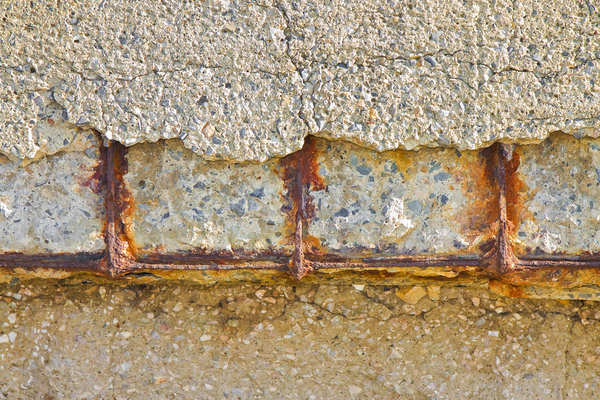
Understanding concrete cancer
To be clear, concrete cancer and concrete spalling are distinct – if related – issues. They originate when the reinforcing steel framework within concrete is exposed to air or water. With exposure comes corrosion.
The steel expands or begins to degrade, cracking the concrete around it, providing more space for water to enter… and worsening the condition.
Concrete spalling describes the initial stage of the process, when the concrete begins to fall apart. It’s marked by cracking or crumbling, bubbling paint, rust stains and overhead leaks. Untreated concrete spalling will worsen – and without intervention it leads directly to concrete cancer.
Concrete cancer occurs when spalling spreads. Given the process cycle – exposure, corrosion, more degradation allowing more exposure – the condition always worsens. Concrete cancer will not fix itself – and it has the potential to cause extensive and costly property damage.
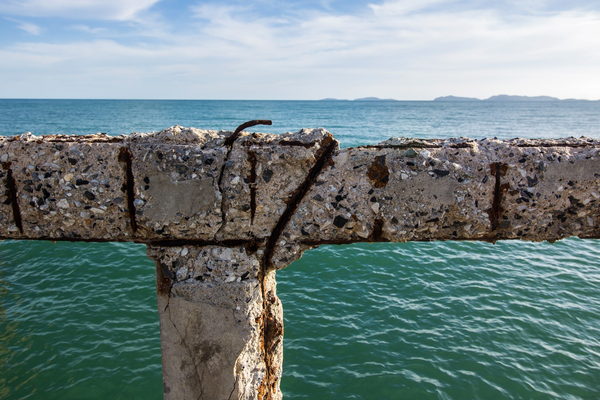
Primary factors for concrete cancer
There are several potential causes of concrete spalling and concrete cancer. Natural factors that may play a role include saltwater chloride corrosion (for properties near the ocean) and extreme weather, which may prematurely age a waterproofing membrane, leading to leaks.
In many cases, problems stem from the initial construction when human error or mishaps trigger defects.
Sometimes these defects mean the metal reinforcement mesh does not have adequate concrete above it – so there’s insufficient protection from the elements. And poor-quality waterproofing can be the culprit.
“When we walk into a building we tend to look up,” says Ron. “It’s force of habit. If we see a roof with water or rust stains, it often indicates a problem – and that problem may be the first stage of concrete cancer, or it may already be advanced. People generally do tend to leave it until it’s been there for a while.”
Defects defined
Following are some of the most common concrete cancer causes:
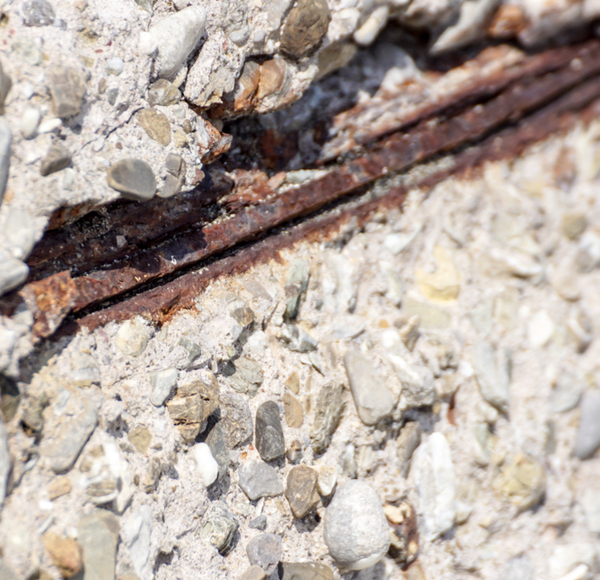
- Poorly poured substrate – Poorly poured concrete may contain cracks or hollows which allow air and water to seep in. The issue can start close to – or deep beneath – the surface.
- Steel position – Despite its appearance, concrete is porous. When it heats up it expands, and as it cools down it contracts. Water may seep into the concrete as it expands and any steel positioned too close to the surface is at risk.
- Incompatible materials – On occasion, builders may inadvertently use incompatible metals in the framework. This can start a reaction which causes the weaker one to corrode, expand and crack the surrounding concrete.
- Excess weight – Extreme weight positioned on concrete not designed for that weight can create stress fractures. And those fractures provide another path for water to flow in and affect the steel inside.
- Poor waterproofing – Waterproofing should be airtight. A shoddy job can allow water and moisture in, which starts the spalling process.
According to Ron, one of the most common issues he sees is steel positioned too close to the surface. “The steel has to be a minimum distance from the surface to avoid the likelihood of air or water seeping in. If the property is near water, you need around 50mm. In other areas, it will be 30mm.”
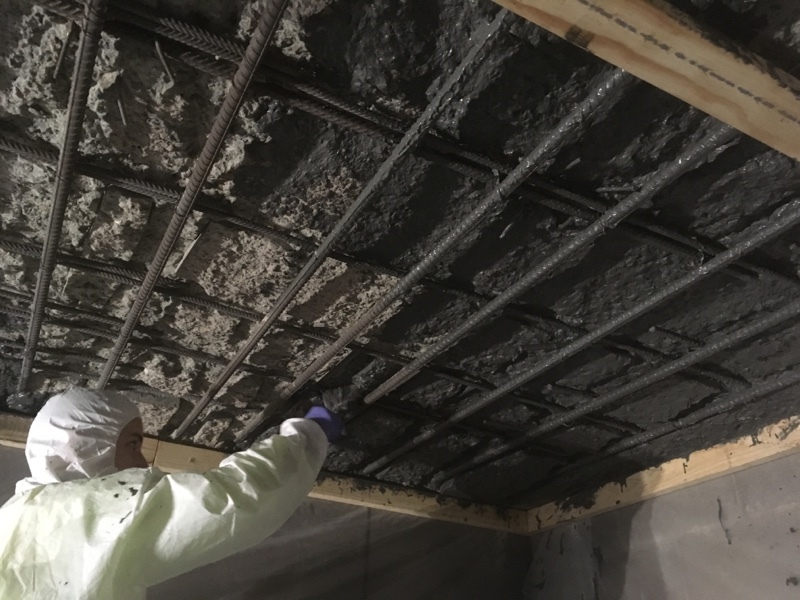
And the remedies
Remedies for concrete cancer vary, dependent on the nature and location of the problem – and how quickly it’s caught. If treated early, it can be a relatively quick process.
Concrete cancer that has spread however, involves a much longer, and costlier, fix.
Repair options include a polymer modified repair system which involves removal of the affected concrete, cleaning of the internal steel and the application of a primer and polymer modified material, then an anti-carbonation protective coating. In severe cases, the steel may need replacement.
A second option is electrochemical treatment, and this is particular to buildings affected by saltwater corrosion.
If the damage from concrete cancer is moderate, the repair will be much smoother.

Working through a repair
Ron explains that many concrete cancer repairs involve a similar process. “In the initial stages we will break the concrete in the affected area to investigate the exact state of the metal beneath it. We then trace that in each direction to where we can see it’s in reasonable condition. Some steel will just need cleaning. If the original diameter of the steel has reduced by 25%, it needs replacing. We’ll cut it out and install a new section.”
Once the steel is repaired, primer is applied to build up the area around the metal framework. “We can put epoxy primer around the steel and build it up in steps. Sometimes we might need four layers to build it up to the original shape of the concrete. On average it might take four to five days to complete.”
With the steel and concrete ready, Danrae Group’s expert waterproofers lay and seal the waterproofing membrane, repair, rebuild and re-tile the site if needed, remove rubbish – and prepare a preventative maintenance plan.
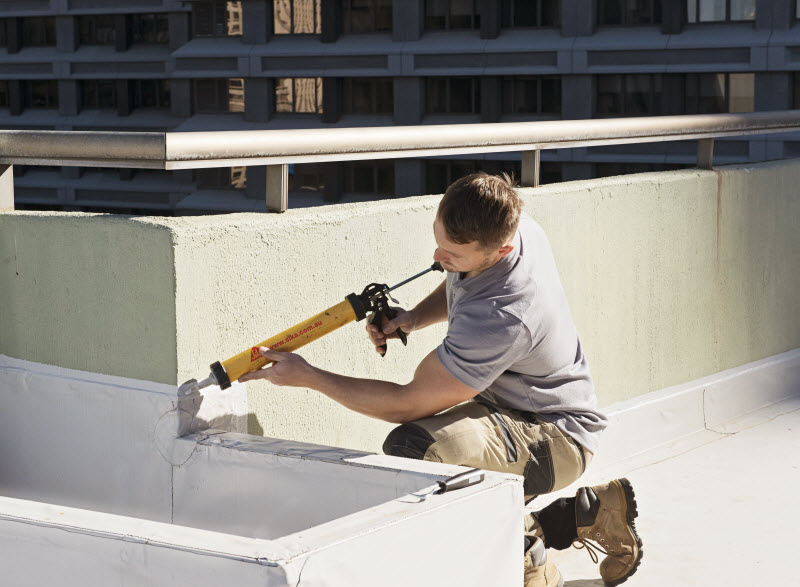
Concrete cancer cure - and prevention
Concrete cancer is pervasive, so the best approach is to be on the lookout for the tell-tale signs. If you discover leaks, bubbling paint, rust stains or cracks, take action.
Danrae Group has decades of experience and a diverse team trained in every waterproofing technique and every brand. We also provide full diagnostic, solution design and site remediation.
Our end to end process covers every stage from quote to completion. We provide fully certified services, and we always leave a site in pristine condition.
To ensure the quality of your waterproofing – and protect your warranty – we offer full ongoing preventative maintenance.
Danrae Group are the waterproofing experts – and we know everything there is to know about concrete cancer causes and remedies. Contact us to remove your concrete cancer and spalling – with quality guaranteed. Read more about waterproofing maintenance.










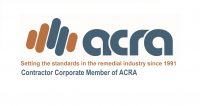

 1800 326 723
1800 326 723
